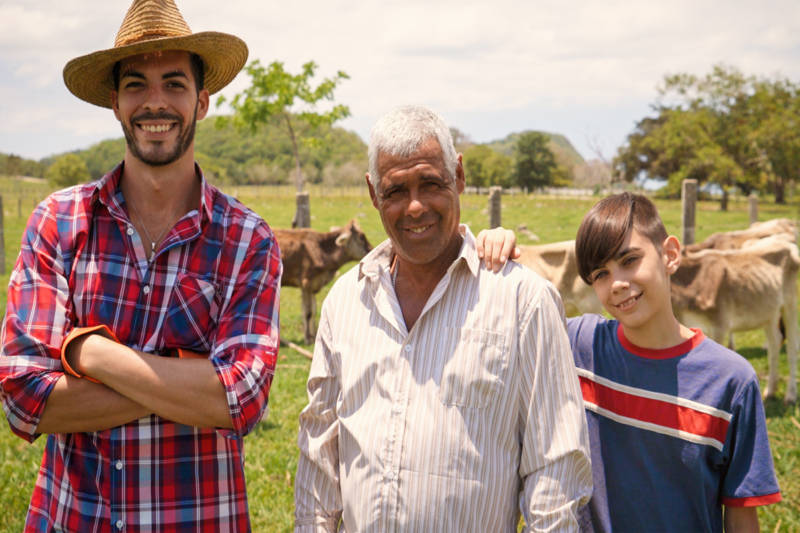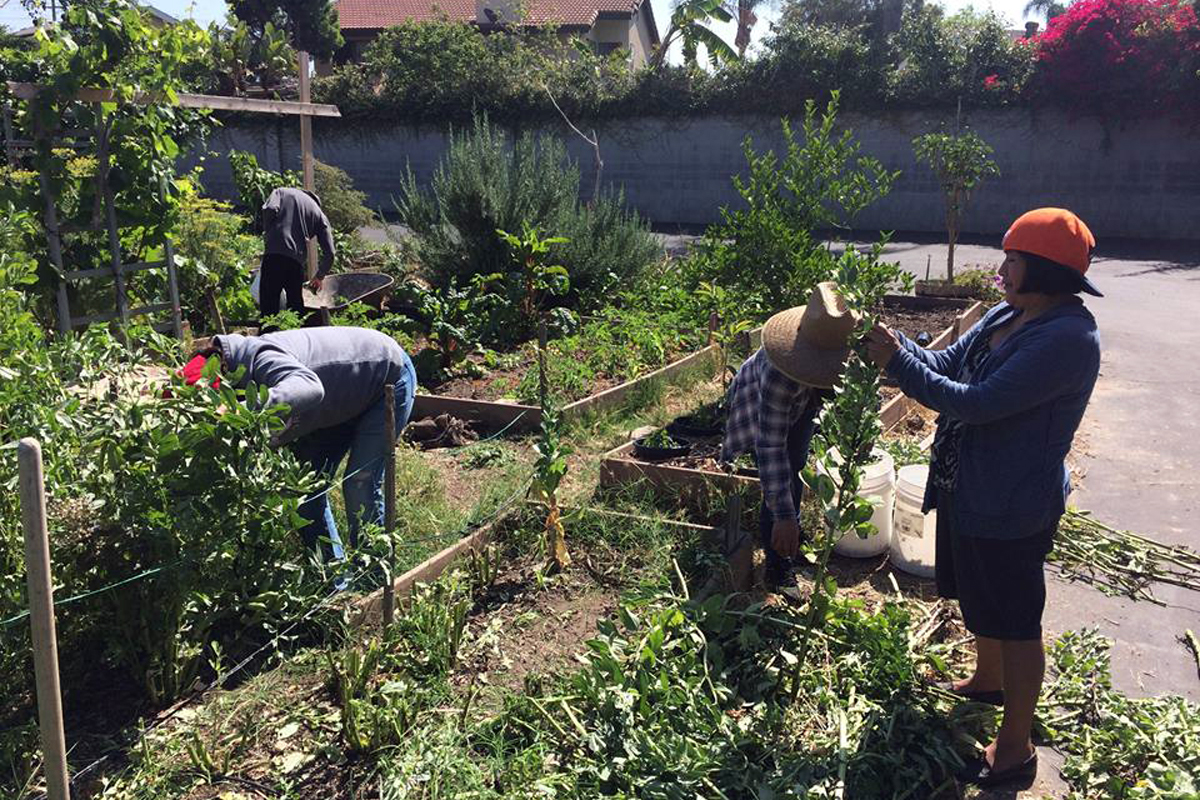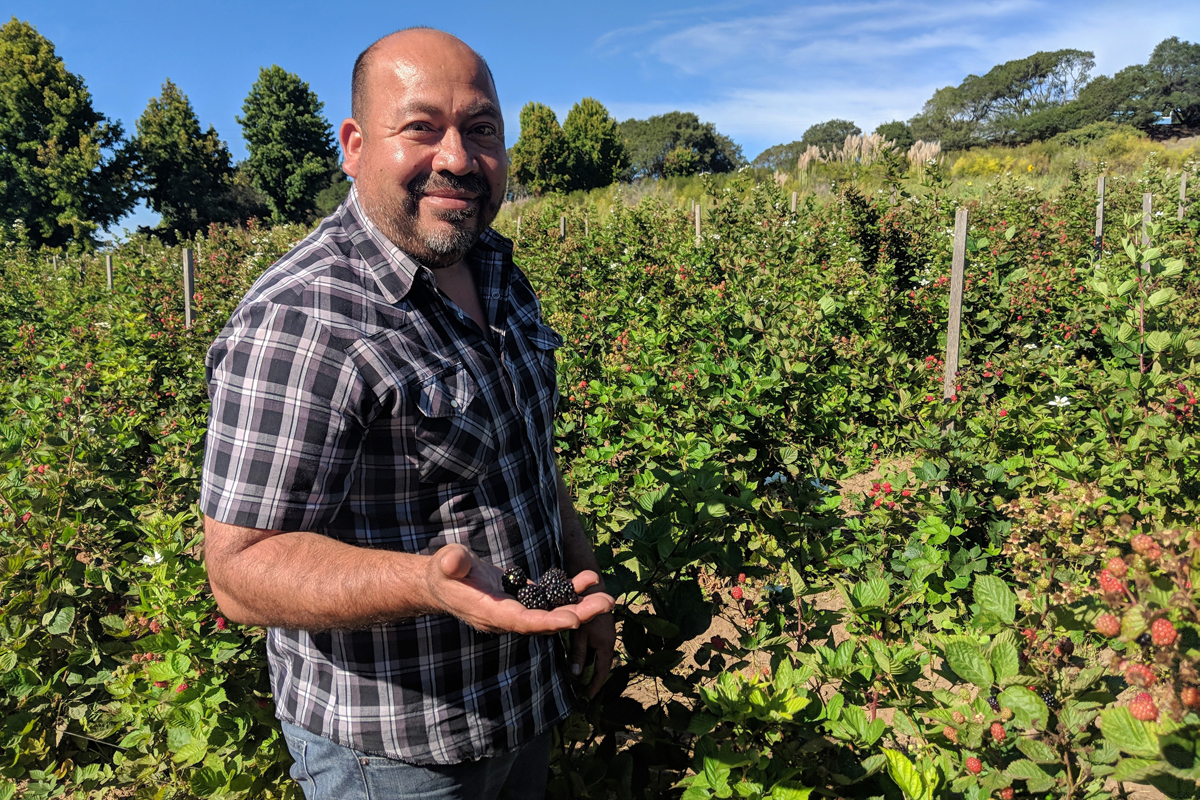Farmers of Color May Soon Get More Support in California

Abel Ruiz would like nothing more than to farm his own land, but he lacks the financial resources to make his dream a reality. Ruiz belongs to a Santa Ana, California farming cooperative called Community in Resistance for Ecological and Cultural Empowerment (CRECE), which farms on a half-acre of land that members lease on a month-to-month basis from a local church. This tenuous arrangement has led the group’s members to try to acquire a lot of their own, but they’ve encountered the same roadblock.
“We ran into this wall of bureaucracy,” Ruiz, 35, said. “The city won’t sell us land unless we have some form of financial backing, but funders won’t fund us unless we have some form of assets.”
Without investors or assets, co-op members find themselves at square one—working leased land they may not have access to the following month. CRECE’s agreement with the church could end at any time. “That’s not a strong foundation for any farmer,” Ruiz said.

He recently discussed his challenges before the California State Assembly’s Committee on Agriculture in support of a bill sponsored by Assemblyman Robert Rivas, a Democrat who represents the farming-intensive Central Coast, that could be a game-changer for aspiring farm owners like Ruiz. AB 986—the Regional Economies and Equity in Agricultural Lands (REEAL) Act—would create a fund to conserve farmland for socially disadvantaged farmers and give them access to financial resources such as down-payment assistance and one-time investments in infrastructure improvements.
Supporters of the bill say it’s sorely needed as the state’s agricultural industry evolves. Aging white farmers are increasingly turning over their acres to investment firms who drive up land costs, making ownership off limits to California’s growing share of Latinx and Southeast Asian farmers. Rivas’s bill is one of several aimed at lowering the barriers that farmers of colors face today as a result of agriculture’s ongoing history of racial exclusion.
“Farmers of color are the fastest-growing [group of] farmers in the country,” said Neil Thapar, food and farm program director for the Sustainable Economies Law Center, which is a member of the California Farmer Justice Collaborative, another sponsor of AB 986. “As our farming population diversifies, those are the people we need to serve. We need to help them continue and maintain strong local agricultural economies, which allows for more local food to be grown to satisfy the culturally relevant food needs of a more diverse population.”
Legacy of Discrimination
Farmers of color in California have long experienced discrimination at both the state and national level. The California Alien Land Law of 1913 robbed immigrants of Asian descent of the chance to buy farmland or enter into long-term lease contracts. Seven years later, the act was updated as the California Alien Land Law of 1920. Asian farmers worked under these oppressive laws until 1952, when the Supreme Court of California reversed them. Decades later, groups of Black and Latinx farmers filed class action lawsuits alleging that the U.S. Department of Agriculture denied them loans and benefits during the 1980s and ‘90s—lawsuits that were settled with historic billion-dollar payouts to the farmers.
Given this historical context, Paul Towers, executive director of the Community Alliance with Family Farms, said that the REEAL Act of 2019 serves to address the legacy of racism in California’s agriculture system.
“Our future targets those farmers left out and pushed through the margins by a system that has favored wealthier white farmers,” Towers said.
California farmworkers and their families have also been subjected to environmental racism directly tied to the agricultural industry. The U.S. Environmental Protection Agency settled a lawsuit in 2011 spearheaded by retired Latinx farmworkers from Oxnard, California, who said their children had been routinely exposed to the pesticides sprayed on strawberry fields near their schools. The settlement required the California Department of Pesticide Regulation to monitor three farming communities for airborne chemicals.
“Racism persists today within the agricultural community,” said Beth Smoker, food and agriculture policy consultant for the Pesticide Action Network. “The government structures have been systematically set up so that for this generation of farmers today, those barriers still exist.”
The REEAL Act is an outgrowth of California’s Farmer Equity Act of 2017, which acknowledged the history of racism in agriculture and outlined plans for initiatives to serve socially disadvantaged farmers. So is AB 838, which would require the University of California to establish the statewide Farmer Equity and Innovation Center to provide training and assistance to new farmers and small and medium-sized farm owners. The program, which must be in place by July 1, 2021, would train these farmers to use best farm management practices, manage water efficiently, and market culturally relevant crops—foods that have been staples in diets of ethnic minority groups.
At the CRECE co-op, Ruiz and his fellow farmers grow food specifically with the Mexican community in mind, he said. Their crops include garbanzo beans, corn, cucumber, tomatoes, and a mishmash of what he describes as “Mexican kitchen herbs.”
“Both land access and technical assistance are major gaps for young farmers,” said Sophie Ackoff, vice president of policy and campaigns for the National Young Farmers Coalition. “We really see both bills as being the solution. We need both of them.”
Ackoff is excited that AB 838 sets out to provide farmers with culturally relevant training practices given in the languages they speak, as language barriers have previously hindered them from getting important information from small-farm advisors. Culturally relevant training also involves supporting farmers of color who use the organic and traditional farming techniques long adopted by their ethnic groups, including intercropping, agroforestry, and no-till farming. Farmers who practice intercropping grow different types of crops, such as lettuce and brussels sprouts, between rows. Agrofroestry combines farming with tree-growing and preservation, and no-till farming entails growing crops without disrupting the soil through tillage.
Maya Blow, who owns along with her husband the three-acre Soul Flower Farm in El Sobrante, said that farmers can benefit from technical assistance, as long as it’s culturally relevant. She and her husband are African American and have often felt that the methods people of color have long used to farm are overlooked.
“Training is great in my opinion,” Blow said, “but I don’t see it benefitting anybody if it’s just in conventional Western farming techniques that deplete the land.” She cites permaculture, or agroforestry, as an example of an indigenous farming practice that’s catching on with the mainstream farming community. “Permaculture is way to farm using regenerative and sustainable techniques,” she said. “It is an indigenous sustainability practice that was recoined and renamed.”
Blow and her husband have had their farm for nine years. They grow most of the crops for themselves, their two sons, and the students Blow teaches at the herbalist school she runs. She grows more than 100 plants, including Mexican marigold, rosemary, thyme, white sage, blue sage, mugwort, and calendula, for medicinal purposes. She also sells these plants at the local farmers’ market.
Blow said that she was always drawn to herbalism and farming. She and her husband primarily learned about farming through reading, researching, and connecting with veteran farmers in their community. Because she likes to take their own approach to farming, Blow said that she’s not sure how much she would’ve turned to the state for assistance, but acknowledges the benefits of the pending legislation.
“With more help and financial support, we could have accomplished what we’ve done in nine years in two,” she said.
Impact of Rising Land Values
According to the 2017 Census of Agriculture, released in April, farms operated by Hispanics, blacks, Native Americans, and Asians all rose from 2012 to 2017. That this growth is occurring during a period of decline for farm ownership overall signals that farmers of color will likely play key roles in the future of agriculture. But without financial resources, they could be sidelined as the mostly white farming population retires.
“Seventy percent of retiring farmers don’t have succession plan,” Thapar said. “That’s really dangerous in that if there are not enough family members left to run the land, it’s going to be sold off to someone else to develop into something else that doesn’t include growing food.”
The conversion of agricultural land into other entities has ecological effects as well. The REEAL Act notes that it reduces California’s ability to store carbon, maintain regional ecosystems, and, of course, produce food. The acquisition of California farmland by investment firms and corporations has also raised land values. In California, the real estate value of farmland is $9,000 per acre. Only four states—all on the East Coast—have higher real estate values. And at $340 per acre, California leads the nation in rent paid for agricultural land.
“The cost of land is compounding the difficulties farmers of color have to accessing land,” said Young Farmers Coalition’s Ackoff. “They are not inheriting farmland either, so they are left out of this old-boy network.”
Pesticide Action Network’s Smoker said that historically discriminatory policies have led to farmers of color slowly losing their land over time. She added that receiving fewer federal loans than their white counterparts has also shaped the state of agriculture today.
As farmers of color struggle to buy land that’s rapidly rising in value, more farms are being consolidated. In California and across the country, the number of farms is decreasing, but the size of farms is increasing. Towers said this has ramifications for the food supply and for farmers of color.
“They are farming more acres and growing fewer and fewer crops in order to make enough money to be viable,” he said. “The pressure of overall consolidation makes it harder and harder to be a smaller farmer and compete with larger farmers in price and access to market. There are not enough farmers’ markets that make up for the difference.”
Should Farm Ownership Be the Goal?
Daniel A. Sumner, a professor of agricultural and resource economics at the University of California, Davis, called the REEAL Act well-intentioned legislation. However, he also expressed some concerns about the bill. He questioned the idea that land ownership should be the ultimate goal of farmers.
“Most people who own farmland aren’t farmers, and being a farmer doesn’t necessarily have to do with land ownership,” he said. “Farming is a really tough business. A lot of farmers end up bankrupt and feeling like failures, so the last thing I want to encourage is telling people, ‘Come on in, the water is fine.’”
The legislation notes that California agriculture is in a precarious state, with roughly 50,000 acres of farmland and rangeland lost annually. While the REEAL Act would increase efforts to make more farmers of color landowners, it also includes provisions to help these farmers enter into long-term leasing contracts.
Ackoff, however, said that ownership is important for farmers because it gives them much-needed stability, allows them to conserve land, and lowers the odds that farms will end up on the real estate market.
“The leases many farmers are operating under prevent them from making the investments they need to,” she said.
Javier Zamora, who owns JSM Organic Farms in Royal Oaks, California, agrees. Until securing a loan from the nonprofit California FarmLink that he used to start JSM seven years ago, Zamora spent much of his life working other people’s land.

“When you lease, there’s always something that stops you from fully developing your business,” Zamora said. “You can’t build anything on it. When you own your land, there’s just no limit.”
Ruiz believes the legislation has the potential to not only help CRECE but also other would-be farmers in his community.
“We’re not the only ones who’ve gravitated toward farming,” he said. “We’ve met some others who’ve kind of given up. There are people who are interested in farming, and they have a wealth of knowledge. We just need to give them access to land.”
This article originally appeared on Civil Eats.